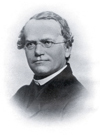
1. PAPER: Mendel, Gregor. (1865): Experiments in plant hybridization.

In February and March of 1865, Gregor Mendel presented the Brünn Natural History Society in Brünn, Czechoslovakia, with the results of his investigations into the mechanisms governing inheritance in pea plants. The next year, the work was published as Mendel, Gregor. 1866. "Versuche über Pflanzen Hybriden." Verhandlungen des naturforschenden Vereines in Brünn, 4:3-47.
In this remarkable paper, Mendel laid the groundwork for what later became the science of genetics. However, the work was largely ignored when it appeared and Mendel moved on to other things. He died in 1884.
His work was rediscovered at the turn of the century and its significance immediately recognized. Genetics, as a formal scientific discipline, exploded into activity in 1900.
An annotated version of Mendel's paper is also available. The annotated version contains explanatory notes throughout the document. This can be useful to those reading Mendel's paper for the first time.
For those wishing to see and read Mendel in the original, a facsimile reprint edition is available. This version is in Adobe PDF format, but the pages are images of the original publication, not a new type-setting of the material.
You may also wish to visit The Mendel Web site, created by Roger Blumberg. The site offers many additional resources for the Mendel scholar.
(with an explanatory introduction by R. J. Robbins)
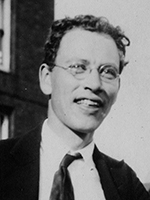
Today, with genome projects routinely producing detailed genetics maps of mice and men and every other sort of organism, it can be difficult to imagine a time when there were no genetic maps. The idea that individual genes occupy regular positions on chromosomes was one of the great insights of early genetics, and the very first genetic map was published in 1913 by Alfred H. Sturtevant, who was working on fruit flies in the laboratory of Thomas H. Morgan at Columbia University.
Sturtevant is now well known as one of the most important early pioneers in genetic research. However, at the time he produced the first map, he was an undergraduate. Many years later, Sturtevant ( A History of Genetics ) described how an undergraduate came to be crucially involved in establishing the very foundations of classical genetics:
In 1909, the only time during his twenty-four years at Columbia, Morgan gave the opening lectures in the undergraduate course in beginning zoology. It so happened that C. B. Bridges and I were both in the class. While genetics was not mentioned, we were both attracted to Morgan and were fortunate enough, though both still undergraduates, to be given desks in his laboratory the following year (1910-1911). The possibilities of the genetic study of Drosophila were then just beginning to be apparent; we were at the right place at the right time. In the latter part of 1911, in conversation with Morgan, I suddenly realized that the variations in strength of linkage, already attributed by Morgan to differences in the spatial separation of the genes, offered the possibility of determining sequences in the linear dimension of a chromosome. I went home and spent most of the night (to the neglect of my undergraduate homework) in producing the first chromosome map, which included the sex-linked genes y, w, v, m, and r, in the order and approximately the relative spacing that they still appear on the standard maps (Sturtevant, 1913).
3. PAPER: Morgan, Thomas H. (1910): Sex-limited inheritance in Drosophila.
(with an explanatory introduction by R. J. Robbins)
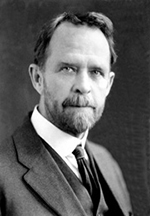
After Mendel's work was rediscovered in 1900, many researchers worked to confirm and extend his findings. Although a possible relationship between genes and chromosomes was suggested almost immediately, proof of that relationship, or even evidence that genes were physical objects, remained elusive. To many, the gene served only as a theoretical construct, conveniently invoked to explain observed inheritance patterns. In 1909, Morgan himself published a paper in which he expressed his skepticism about the facility with which Mendelian explanations were adjusted to fit the facts.
Just one year later, however, Morgan published the results of his work on an atypical male fruit fly that appeared in his laboratory, and all this began to change. Normally Drosophila melanogaster have red eyes, but Morgan's new fly had white eyes. The inheritance pattern for this new eye-color trait suggested strongly that the gene for eye-color was physically attached to the X-chromosome. In the paper, Morgan concluded:
It now becomes evident why we found it necessary to assume a coupling of [the eye-color gene] and X in one of the spermatozoa of the red-eyed F1 hybrid. The fact is that this R and X are combined, and have never existed apart.
In this present paper, Morgan offered the first evidence that genes are real, physical objects, located on chromosomes, with properties that could be manipulated and studied experimentally. The white-eyed fly provided the foundation upon which Morgan and his students established the modern theory of the gene.
4. PAPER: Hardy, G. H. (1908): Mendelian Proportions in a Mixed Population.
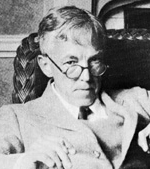
Every geneticist has heard of the Hardy-Weinberg Law and of Hardy-Weinberg Equilibrium, and nearly all basic biology texts teach that G. H. Hardy played a seminal role in founding population genetics. But, what most biologists don't realize is that Hardy's total contribution to biology consisted of a single letter to the editor in Science. The letter began,
I am reluctant to intrude in a discussion concerning matters of which I have no expert knowledge, and I should have expected the very simple point which I wish to make to have been familiar to biologists. However, some remarks of Mr. Udny Yule, to which Mr. R. C. Punnett has called my attention, suggest that it may still be worth making.
With that, Hardy offered his "simple point" and then washed his hands of biology. His autobiography, A Mathematician's Apology, makes no mention of population genetics.
5. /foundations/genetics/classical/holdings/o/ostrom-1969.pdf
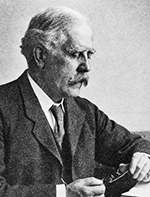
This paper is a true classic. Like Mendel's own work, this report offers insights so far ahead of its time that it, and Garrod's follow-on work, were largely neglected, until later efforts to elucidate the physiological functioning of genes led to the Nobel-prize-winning one-gene, one-enzyme hypothesis.
Less than two years after the rediscovery of Mendelism and just a few years after the word biochemistry was first coined, Garrod reports on alkaptonuria in humans and comes to the conclusion that it is inherited as a Mendelian recessive and that the occurrence of mutations (sports in the word of the time) in metabolic function should be no more surprising than inherited variations in morphology.
7. Mendel, Gregor (1866): Gregor Mendel's letters to Carl Nägeli, 1866-1873.
After his original paper on peas, Mendel published only one other paper on genetics, that one on Hieracium. These letters to Nägeli provide a rare additional glimpse into Mendel's thinking as he pursued his investigations on heredity.
8. PAPER: Morgan, T. H. and Bridges, C. B. (1916): Sex-linked Inheritance in Drosophila.
In this special publication from the Carnegie Institution of Washington, Morgan and Bridges review and summarize what was then known about sex-linked traits in Drosophila. It is interesting to note that this was written early enough that they use the word gen instread of the later word gene.
9. PAPER: Muller, Hermann J. (1927): Artificial transmutation of the gene.
This paper was published as the first article in the first volume the new journal genetics. As the title states, the paper offered PROOF that genes are real, physical things that are carried on chromosomes.
This article was scanned from Alfred Sturtevant's personal copy of Genetics. Access to the journal was provided by Edward B. Lewis and Elliot M. Meyerowitz of the California Institute of Technology.
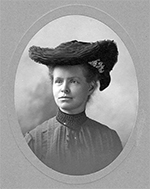
Nettie Stevens was one of the first female scientists to make a name for herself in the biological sciences. In 1896, Stevens went to California to attend Leland Stanford Jr. University, where she obtained first a bachelor's and then a masters in biology. Her masters thesis involved microscopic work and precise, careful detailing of new species of marine life. This training was a factor in her success with later investigations of chromosomal behavior. After Stanford, Stevens pursued a PhD. at Bryn Mawr College, where Thomas Hunt Morgan was still teaching and was one of her professors. Stevens again did so well that she was awarded a fellowship to study abroad. She traveled to Europe and spent time in Theodor Boveri's lab at the Zoological Institute at Würzburg, Germany. Boveri was working on the problem of the role of chromosomes in heredity and Stevens likely developed an interest in the subject from her stay.
In 1903, after receiving her Ph.D from Bryn Mawr, Stevens was given an assistantship by the Carnegie Institute after glowing recommendations from Thomas Hunt Morgan, Edmund Wilson and M. Carey Thomas, the president of Bryn Mawr. Her work on sex determination was published as a Carnegie Institute report in 1905. In this first study she looked at sex determination in meal worms. Later, she studied sex determination in many different species of insects. Stevens' assistantship at Bryn Mawr still meant that she had to teach. desiring a pure research position, Stevens wrote to Charles Davenport at Cold Spring Harbor to see if it was possible for her to work at his Station for Experimental Biology. Unfortunately, Stevens died of breast cancer in 1912 before she could occupy the research professorship created for her at Bryn Mawr, or work with Davenport at Cold Spring Harbor.
12. PAPER: Morgan, Thomas H. (1909): What are "factors" in Mendelian explanations?

Although T. H. Morgan is best known for heading the genetics laboratory at Columbia University (later at Cal Tech) that essentially defined American genetics research for decades, he was initially skeptical of the facile manner in which combinations of alleged Mendelian factors were being invoked to explain all manner of heritable traits.
This paper begins with a wonderful debunking of easy explanation:
In the modern interpretation of Mendelism, facts are being transformed into factors at a rapid rate. If one factor will not explain the facts, then two are invoked; if two prove insufficient, three will sometimes work out. The superior jugglery sometimes necessary to account for the result, may blind us, if taken too naïvely, to the common-place that the results are often so excellently "explained" because the explanation was invented to explain them. We work backwards from the facts to the factors, and then, presto! explain the facts by the very factors that we invented to account for them.
13. PAPER: Sutton, Walter S. (1903): The chromosomes in heredity.
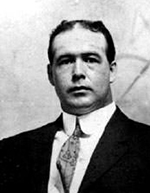
Early on, some researchers noticed that Mendel's theory required that some kind of hereditary unit segregate in pairs to offspring. Sutton was one of the first to note that the chromosomes behaved in exactly a manner to match this requirement.
The opening lines of his paper show that he is aware of the significance of his observations:
In a recent announcement of some results of a critical study of the chromosomes in the various cell generations of Brachystola the author briefly called attention to a possible relation between the phenomena there described and certain conclusions first drawn from observations on plant hybrids by Gregor Mendel in 1865, and recently confirmed by a number of able investigators. Further attention has already been called to the theoretical aspects of the subject in a brief communication by Professor E. B. Wilson. The present paper is devoted to a more detailed discussion of these aspects, the speculative character of which may be justified by the attempt to indicate certain lines of work calculated to test the validity of the conclusions drawn. The general conceptions here advanced were evolved purely from cytological data, before the author had knowledge of the Mendelian principles, and are now presented as the contribution of a cytologist who can make no pretensions to complete familiarity with the results of experimental studies on heredity. As will appear hereafter, they completely satisfy the conditions in typical Mendelian cases, and it seems that many of the known deviations from the Mendelian type may be explained by easily conceivable variations from the normal chromosomic processes.
14. PAPER: Mendel, Gregor. (1865): Experiments in plant hybridization. (annotated)
(with explanatory side-note annotations by R. J. Robbins)

In February and March of 1865, Gregor Mendel presented the Brünn Natural History Society in Brünn, Czechoslovakia, with the results of his investigations into the mechanisms governing inheritance in pea plants. The next year, the work was published as Mendel, Gregor. 1866. "Versuche über Pflanzen Hybriden." Verhandlungen des naturforschenden Vereines in Brünn, 4:3-47.
In this remarkable paper, Mendel laid the groundwork for what later became the science of genetics. However, the work was largely ignored when it appeared and Mendel moved on to other things. He died in 1884.
His work was rediscovered at the turn of the century and its significance immediately recognized. Genetics, as a formal scientific discipline, exploded into activity in 1900.
A non-annotated version of Mendel's paper is also available.
For those wishing to see and read Mendel in the original, a facsimile reprint edition is available. This version is in Adobe PDF format, but the pages are images of the original publication, not a new type-setting of the material.
You may also wish to visit The Mendel Web site, created by Roger Blumberg. The site offers many additional resources for the Mendel scholar.
15. PAPER: Wright, Sewall. (1931): Evolution in Mendelian populations.
Soon after the establishment of Mendelian genetics, several workers began to explore how Mendelian mechanisms would affect changes in gene frequencies in populations — that is, they began to explore the implications of Mendelism for evolution.
Sewall Wright became one of the leading theoreticians who studied Mendelism in the context of population genetics. This paper is a key presentation of his thinking on how Mendelism and evolution might interact.
16. PAPER: Sutton, Walter S. (1902): On the morphology of the chromosome group in Brachystola magna.

In this paper, Sutton reports cytological studies of grasshopper chromosomes that lead him to conclude that (a) chromosomes have individuality, (b) that they occur in pairs, with one member of each pair contributed by each parent, and (c) that the paired chromosomes separate from each other during meiosis.
After presenting considerable evidence for his assertions, Sutton closes his paper with a sly reference to its undoubted significance:
I may finally call attention to the probability that the association of paternal and maternal chromosomes in pairs and their subsequent separation during the reducing division as indicated above may constitute the physical basis of the Mendelian law of heredity. To this subject I hope soon to return in another place.
17. PAPER: Tschermak, Erik von (1900): Concerning artificial crossing in Pisum sativum
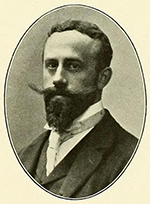
Tschermak, along with Carl Correns and Hugo de Vries, is considered to be one of the three co-discovers of Mendel's work in 1900. He had been working himself with garden peas when he rediscovered Mendel's prior contributions. In a postscript to his paper, he wrote:
Correns has just published experiments which also deal with artificial hybridization of different varieties of Pisum sativum and observations of the hybrids left to self-fertilization through several generations. They confirm, just as my own, Mendel's teachings. The simultaneous "discovery" of Mendel by Correns, de Vries, and myself appears to me especially gratifying. Even in the second year of experimentation, I too still believed that I had found something new.
18. PAPER: Weldon, W. F. R. (1902): Mendel's laws of alternative inheritance in peas.
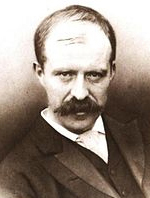
Textbook treatments of genetics often give the impression that upon being rediscovered Mendel's dominated the field. This is not so. Galton and his followers had been working for decades studying patterns of inheritance and had developed a formal quantitative model for the inheritance of "natural" (i.e., continuous) traits.
The biometricians, as they were called, felt that Mendel's work was a special case, valid only when applied to discontinuous traits in domesticated species. Weldon was a leading proponent of the biometrician school. This paper provides a strong summary of why the biometricians believed Mendel's work to be fundamentally flawed and of no general consequence. The paper concludes:
The fundamental mistake which vitiates all work based upon Mendel's method is the neglect of ancestry, and the attempt to regard the whole effect upon offspring, produced by a particular parent, as due to the existence in the parent of particular structural characters; while the contradictory results obtained by those who have observed the offspring of parents apparently identical in certain characters show clearly enough that not only the parents themselves, but their race, that is their ancestry, must be taken into account before the result of pairing them can be predicted.
This paper was published as the first article in the first volume the new journal genetics. As the title states, the paper offered PROOF that genes are real, physical things that are carried on chromosomes.
This article was scanned from Alfred Sturtevant's personal copy of Genetics. Access to the journal was provided by Edward B. Lewis and Elliot M. Meyerowitz of the California Institute of Technology.
20. PAPER: Wilson, Edmund B. (1905): The chromosomes in relation to the determination of sex in insects.
(with an explanatory introduction by R. J. Robbins)
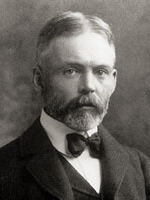
In this short note, Wilson (a leading cell biologist of his time) offers his endorsement of the idea that there is a relationship between specific chromosomes and the determination of sex in insects:
Material procured during the past summer demonstrates with great clearness that the sexes of Hemiptera show constant and characteristic differences in the chromosome groups, which are of such a nature as to leave no doubt that a definite connection of some kind between the chromosomes and the determination of sex exists in these animals. These differences are of two types. In one of these, the cells of the female possess one more chromosome than those of the male; in the other, both sexes possess the same number of chromosomes, but one of the chromosomes in the male is much smaller than the corresponding one in the female (which is in agreement with the observations of Stevens on the beetle Tenebrio).
Wilson's contribution is the observation that the various cases all seem to fall cleanly into one of two types — those in which the male seems to be missing a chromosome, and those in which the male is carrying a pair of mis-matched chromosomes. Wilson's goes on to note that he does not believe that the 'accessory chromosomes' are actual sex determinants as conjectured by McClung, but rather that they probably act in a quantitative, not qualitative manner.
Wilson's endorsement of the idea that chromosome make-up is related to sex determination greatly facilitated the later general acceptance of the notion that individual chromosomes might be related to individual traits. Of course, sex is not a simple Mendelian trait, such as round or wrinkled peas, but nonetheless the evidence that some aspect of phenotype (sex) was related to some aspect of genotype was an important initial step in bringing genetics together with cytology.
William Bateson was the first English-speaking scientist to appreciate the potential significance of Mendel's work. He began working immediately to confirm and extend Mendel's findings. This report to the evolution committee of the Royal Society represents one of the very first systematic investigations into Mendelism as a possible general explanation for the fundamental mechanisms of heredity.
22. PAPER: Muller, Hermann J. (1922): Variation due to change in the individual gene.
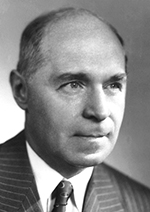
This paper is from an address given by to the thirty-ninth annual meeting of the American Society of Naturalists, held in Toronto on 29 December 29 1921.
In this remarkably prescient analysis, Muller lays out the paradoxical nature of the genetic material. It is apparently both autocatalytic (i.e., directs its own synthesis) and heterocatalytic (i.e., directs the synthesis of other molecules), yet only the heterocatalytic function seems subject to mutation. With this, he defines the key problems that must be solved for a successful chemical model of the gene.
Muller also anticipated the ultimate development of molecular genetics:
That two distinct kinds of substances — the d'Hérelle substances (NOTE: viruses) and the genes — should both possess this most remarkable property of heritable variation or "mutability," each working by a totally different mechanism, is quite conceivable, considering the complexity of protoplasm, yet it would seem a curious coincidence indeed. It would open up the possibility of two totally different kinds of life, working by different mechanisms. On the other hand, if these d'Hérelle bodies were really genes, fundamentally like our chromosome genes, they would give us an utterly new angle from which to attack the gene problem. They are filterable, to some extent isolable, can be handled in test tubes, and their properties, as shown by their effects on the bacteria, can then be studied after treatment. It would be very rash to call these bodies genes, and yet at present we must confess that there is no distinction known between the genes and them. Hence we cannot categorically deny that perhaps we may be able to grind genes in a mortar and cook them in a beaker after all. Must we geneticists become bacteriologists, physiological chemists and physicists, simultaneously with being zoologists and botanists? Let us hope so.
23. PAPER: Ibsen, Heman L. (1916): Tricolor Inheritance. II. the Basset Hound
24. BOOK: Bateson, William. (1908): The Methods and Scope of Genetics.
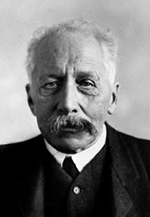
This short book is a copy of the Inaugural Address, given by Bateson upon the creation of the Professorship of Biology at Cambridge. In his introduction, Bateson notes:
The Professorship of Biology was founded in 1908 for a period of five years partly by the generosity of an anonymous benefactor, and partly by the University of Cambridge. The object of the endowment was the promotion of inquiries into the physiology of Heredity and Variation, a study now spoken of as Genetics.
It is now recognized that the progress of such inquiries will chiefly be accomplished by the application of experimental methods, especially those which Mendel's discovery has suggested. The purpose of this inaugural lecture is to describe the outlook over this field of research in a manner intelligible to students of other parts of knowledge.
Here then is a view of how one of the very first practitioners of genetics conceived of the "Methods and Scope of Genetics".
25. PAPER: Wright, Sewall. (1932): Complementary Factors for Eye Color in Drosophila.
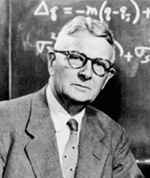
There are two distinct biochemical pathways producing pigments that color the eyes of Drosophila melanogaster — one yields a bright red pigment, the other brown. When both are present, the eyes are dark-red. When one is present and the other absent, flies have brown or bright red eyes. When both are missing, flies have white eyes.
In 1932, Sewall Wright reported the first case where a cross between red-eyed and brown-eyed flies yielded double-recessive progeny with white eyes. What makes this observation interesting is that the work occurred as part of a class exercise in an undergraduate teaching laboratory at the University of Chicago. Not many modern undergraduate lab exercises yield publishable results.
(with an explanatory introduction by R. J. Robbins)

When Alfred Sturtevant created the first genetic map, he hypothesized that genetic recombination resulted from the actual exchange of chromatid fragments. However, at the time there was no hard evidence that proved recombination is accomplished via such a mechanism. The same genetic results could be explained if only alleles are exchanged during recombination, leaving the bulk of the chromatid arm unaffected. Since the two hypotheses make equivalent predictions regarding the distribution of alleles, they cannot be distinguished using purely genetic methods.
Attempting to demonstrate that genetic recombination is accomplished via the physical exchange of chromatid arms poses a problem similar to that encountered by Thomas H. Morgan when he first hypothesized that genes might be carried on the X chromosome. Although Morgan's genetic hypothesis of X-linkage provided an explanation for the inheritance of the white-eye allele in Drosophila, the notion that genes are actually carried on the X chromosome was not proven until Calvin Bridges provided cytological evidence to confirm the genetic observations. Bridges established a one-to-one correspondence between the abnormal distribution of eye-color alleles and the abnormal distribution of X chromosomes. That is, he established a relationship between genetic markers (the eye color alleles and their associated inheritance patterns) and cytological markers (the presence of abnormal sets of sex chromosomes).
In this paper, Creighton and McClintock present work in which they use a combination of cytological and genetic markers to show that cytological crossing-over occurs and that it is accompanied by genetical crossing-over. In just a few pages the authors accomplish their goal of establishing the reality of cytological recombination and of showing that it is associated with genetic recombination. This paper is truly a classic.
If this paper is read in isolation, the authors' discussion of their results can, at times, be difficult to follow. When this paper was originally published, however, it was accompanied by another paper (by McClintock) that immediately preceded it in the journal and that was intended to serve as an introduction to this paper. In the preceding paper, McClintock provided the basic genetic and cytological information necessary to understand the experimental logic of this paper. The background paper is The order of the genes C, Sh, and Wx in Zea mays with reference to a cytologically known point in the chromosome. The two papers should be read together, with the first, descriptive paper serving as a critical and necessary introduction to the second, experimental work.
For additional commentary on Creighton and McClintock's important work, see Edward Coe and Lee B. Kass (2005) Proof of physical exchange of genes on the chromosomes. Proceedings of the National Academy of Sciences, USA. 102:6641-6646.
27. PAPER: Vries, Hugo de (1900): Concerning the law of segregation of hybrids.
28. PAPER: Morgan, Thomas H. (1917): The Theory of the Gene.

In 1909, Morgan expressed doubts about the methods of Mendelian inheritance. Then, in 1910, a white-eyed mutant fly turned up in Morgan's laboratory and studies on the inheritance of the white-eyed trait suggested that the gene producing the trait was carried on the X-chromosome. This strongly suggested that Mendelian genes were real, not theoretical, objects. Suddenly, Morgan became a Mendelian. Within a few years, Morgan and his students in The Fly Room had established a remarkably thorough understanding of The Mechanism of Mendelian Heredity.
In this paper, Morgan discusses The Theory of the Gene, as established in his laboratory.
29. PAPER: Mendel, Gregor (1869): On Hieracium-hybrids obtained by artificial fertilisation.
After his original paper on peas, Mendel published only one other paper on genetics, this one on Hieracium. Unknown to Mendel, Hieracium does not experience normal sexual fertilization, making it impossible for him to confirm the findings that he had obtained earlier with peas.
(with an explanatory introduction by R. J. Robbins)
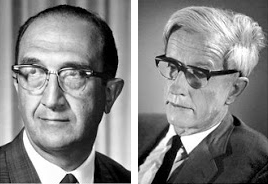
This classic paper is the "fluctuation test" in which Luria and Delbrück first demonstrated the occurrence of microbial genetics. In fact, the fluctuation test must be regarded as the founding of bacterial genetics since it gave the first real proof that bacteria both possessed genes and experienced mutation. Luria and Delbrück shared the 1969 Nobel Prize with Alfred Hershey.
Luria and Delbrück were also able to use their data to calculate the actual mutation rate per bacterial cell division. Averaged across all of their experiments, this came to approximately 2.45 x 10-8. Thus, they not only proved that true genetic mutations occurred in bacteria, but also that such mutations were just as rare in bacteria as they were in higher organisms. Their work demonstrated that heritable variation in bacteria could be attributed to mechanisms similar to those in higher organisms. The previously puzzling ability of bacteria to respond rapidly and adaptively to changes in the environment could now be recognized as nothing more than the normal consequence of random gene mutation, followed by selection, in huge, rapidly reproducing populations.
Following this discovery, many researchers hurried to determine the range of true genetic mutation occurring in bacteria. Soon, such variation was detected in virtually every trait that could be studied, such as color, colony morphology, virulence (ability to infect a host), resistance to antimicrobial agents, nutritional requirements, and fermentation abilities (i.e., the ability to use different compounds as carbon sources).
31. PAPER: Correns, Carl (1900): G. Mendel's law concerning the behavior of progeny of varietal hybrids.
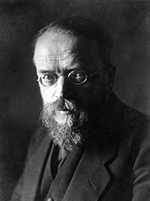
Correns, along with Hugo de Vries and Erik von Tschermak, is considered to be one of the three co-discovers of Mendel's work in 1900. Correns was the only one of the three to acknowledge Mendel in the title of his paper. Correns' paper begins:
The latest publication of Hugo de Vries: Sur la loi de disjonction des hybrides, which through the courtesy of the author reached me yesterday, prompts me to make the following statement: In my hybridization experiments with varieties of maize and peas, I have come to the same results as de Vries, who experimented with varieties of many different kinds of plants, among them two varieties of maize. When I discovered the regularity of the phenomena, and the explanation thereof - to which I shall return presently - the same thing happened to me which now seems to be happening to de Vries: I thought that I had found something new. But then I convinced myself that the Abbot Gregor Mendel in Brünn, had, during the sixties, not only obtained the same result through extensive experiments with peas, which lasted for many years, as did de Vries and I, but had also given exactly the same explanation, as far as that was possible in 1866.
32. PAPER: McClung, C. E. (1902): The accessory chromosome - Sex determinant?
(with an explanatory introduction by R. J. Robbins)
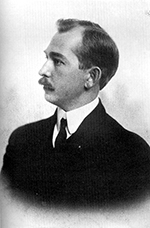
In this paper, McClung analyzes the evidence that male and female insects exhibit different chromosomal structures in their nuclei and that spermatozoa fall into two types - those that carry the "accessory chromosome" and those that do not.
Based on this analysis, McClung offers the bold hypothesis that the presence or absence of the "accessory chromosome" in spermatozoa may determine the sex of the progeny:
A most significant fact ... is that the [accessory chromosome] is apportioned to but one half of the spermatozoa. Assuming it to be true that the chromatin is the important part of the cell in the matter of heredity, then it follows that we have two kinds of spermatozoa that differ from each other in a vital matter. We expect, therefore, to find in the offspring two sorts of individuals in approximately equal numbers. ... [Since] nothing but sexual characters ... divides the members of a species into two well-defined groups, ... we are logically forced to the conclusion that the [accessory] chromosome has some bearing upon this arrangement.
That is, McClung hypothesizes that a difference in chromosome number is the cause, not an effect, of sex determination. This paper represents the first effort to associate the determination of a particular trait with a particular chromosome.
33. BOOK: Punnett, R. C. (1905): Mendelism, 1st Edition.
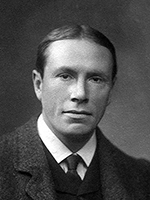
Reginald Punnett was born in 1875 in the town of Tonbridge in Kent, England. Attending Gonville and Caius College, Cambridge, Punnett earned a bachelor's degree in zoology in 1898 and a master's degree in 1901. Between these degrees he worked as a demonstrator and part-time lecturer at the University of St. Andrews' Natural History Department. In October 1901, Punnett was back at Cambridge when he was elected to a Fellowship at Gonville and Caius College, working in zoology, primarily the study of worms, specifically nemerteans. It was during this time that he and William Bateson began a research collaboration, which lasted several years. When Punnett was an undergraduate, Gregor Mendel's work on inheritance was largely unknown and unappreciated by scientists. However, in 1900, Mendel's work was rediscovered by Carl Correns, Erich Tschermak von Seysenegg, and Hugo de Vries. William Bateson became a proponent of Mendelian genetics, and had Mendel's work translated into English and published as a chapter in Mendel's Principles of Heredity: A Defence. It was with Bateson that Reginald Punnett helped established the new science of genetics at Cambridge. He, Bateson and Saunders co-discovered genetic linkage through experiments with chickens and sweet peas.
Punnett's little book — Mendelism — is the first edition of the first genetics textbook ever written. It was published just five years after Mendel's work was rediscovered.
34. PAPER: Mendel - de Vries - Correns - Tschermak (1950): The Birth of Genetics
To celebrate the fiftieth anniversary of the rediscovery of Mendel's work, the Genetics Society of America published this special supplement, containing translations of the original papers by the rediscovers of Mendel - Carl Correns, Erik von Tschermak, and Hugo de Vries. It also contains letters written by Mendel and sent to Carl Nägeli, a leading botanist.
This was the first time these key works were made available in English translation.
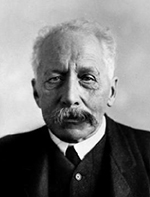
In this talk, given in 1899, before Mendel's work had been rediscovered, Bateson gives his vision of what kind of research will be necessary to shed light on the processes of inheritance and evolution:
What we first require is to know what happens when a variety is crossed with its nearest allies. If the result is to have a scientific value, it is almost absolutely necessary that the offspring of such crossing should then be examined statistically. It must be recorded how many of the offspring resembled each parent and how many shewed characters intermediate between those of the parents. If the parents differ in several characters, the offspring must be examined statistically, and marshalled, as it is called, in respect of each of those characters separately.
One would be hard pressed to provide a better anticipation of the experimental approach of Gregor Mendel. Small wonder that Bateson, upon encountering Mendel's work, quickly became convinced that the correct method for studying inheritance was finally at hand.
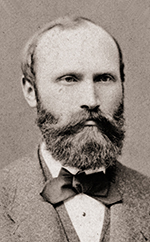
In this review, Waldeyer summarizes the recent major advances in cytology that had occurred up to the date of his paper (1888). Then he proposes a new term — chromosome: Wir haben nun noch einige Punkte genauer zu besprechen, die bisher nur flüchtig berührt worden waren, andere, die noch nicht erwähnt wurden, nachzutragen. In erster Linie möchte ich mir jedoch den Vorschlag erlauben, diejenigen Dinge, welche soeben mit Boveri als "chromatische Elemente" bezeichnet wurden, an denen sieh einer der wichtigsten Akte der Karyokinese, die Flemming'sche Längstheilung vollzieht, mit einem besonderen terminus technicus "Chromosomen" zu belegen. Der Name "primäre Schleifen" passt nicht, da wir bei weitem nicht immer eine Schleifenform für diese Dinge haben. "Chromatische Elemente" ist zu lang. Andererseits sind sie so wichtig, dass ein besonderer küzerer Name wünschenswerth erscheint. Platner (160) gebraucht den Ausdruck "Karyosomen"; da dieser aber zu sehr an Kernkörperchen erinnert, dürfte eine andere Bezeichnung vorzuziehen sein. Ist die von mir vorgeschlagene praktisch verwendbar, so wird sie sich wohl einbürgern, sonst möge sie bald der Vergessenheit anheimfallen.
37. BOOK: Punnett, R. C. (1907): Mendelism, 2nd Edition.

Reginald Punnett was born in 1875 in the town of Tonbridge in Kent, England. Attending Gonville and Caius College, Cambridge, Punnett earned a bachelor's degree in zoology in 1898 and a master's degree in 1901. Between these degrees he worked as a demonstrator and part-time lecturer at the University of St. Andrews' Natural History Department. In October 1901, Punnett was back at Cambridge when he was elected to a Fellowship at Gonville and Caius College, working in zoology, primarily the study of worms, specifically nemerteans. It was during this time that he and William Bateson began a research collaboration, which lasted several years. When Punnett was an undergraduate, Gregor Mendel's work on inheritance was largely unknown and unappreciated by scientists. However, in 1900, Mendel's work was rediscovered by Carl Correns, Erich Tschermak von Seysenegg, and Hugo de Vries. William Bateson became a proponent of Mendelian genetics, and had Mendel's work translated into English and published as a chapter in Mendel's Principles of Heredity: A Defence. It was with Bateson that Reginald Punnett helped established the new science of genetics at Cambridge. He, Bateson and Saunders co-discovered genetic linkage through experiments with chickens and sweet peas.
This second edition of Punnett's text on Mendelism came out just two years after the first edition. In this new edition, Punnett Squares appeared for the first time. Also, the author included an index (that could fit on a single page with room left over).
39. PAPER: Shull, G. H. (1915): Genetic Definitions in the New Standard Dictionary.
(with an explanatory introduction by R. J. Robbins)
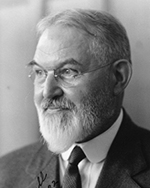
In this short paper, Shull takes exception to some recently published dictionary definitions of many technical genetics terms and he offers corrected definitions in their stead. The main value of this paper to modern readers is that it gives a very good idea of what geneticists (or at least this geneticist) meant by their use of genetic terminology at the time. Although many of Shull's proffered definitions would be at home in a modern biology text, some are no longer in current usage.
Shull could have done a better job of defining "alternative inheritance" by adding "contrast with continuous inheritance," since at the time of his writing there was still a school of thought that argued that most heritable variation was continuous but that Mendelian theories provided explanations only for cases of "alternative inheritance," which were rare in nature and might only represent artifacts of inheritance in domesticated organisms.
For just such a criticism of alternative inheritance, see Weldon, W. F. R. 1902 Mendel's laws of alternative inheritance in peas. Biometrika, 1:228-254.
In this short note, E. B. Wilson calls attention to the possible relationship between Mendelian patterns of inheritance and the assortment of chromosomes in meiosis.

Nettie Stevens was one of the first female scientists to make a name for herself in the biological sciences. In 1896, Stevens went to California to attend Leland Stanford Jr. University, where she obtained first a bachelor's and then a masters in biology. Her masters thesis involved microscopic work and precise, careful detailing of new species of marine life. This training was a factor in her success with later investigations of chromosomal behavior. After Stanford, Stevens pursued a PhD. at Bryn Mawr College, where Thomas Hunt Morgan was still teaching and was one of her professors. Stevens again did so well that she was awarded a fellowship to study abroad. She traveled to Europe and spent time in Theodor Boveri's lab at the Zoological Institute at Würzburg, Germany. Boveri was working on the problem of the role of chromosomes in heredity and Stevens likely developed an interest in the subject from her stay.
In 1903, after receiving her Ph.D from Bryn Mawr, Stevens was given an assistantship by the Carnegie Institute after glowing recommendations from Thomas Hunt Morgan, Edmund Wilson and M. Carey Thomas, the president of Bryn Mawr. Her work on sex determination was published as a Carnegie Institute report in 1905. In this first study she looked at sex determination in meal worms. Later, she studied sex determination in many different species of insects. Stevens' assistantship at Bryn Mawr still meant that she had to teach. desiring a pure research position, Stevens wrote to Charles Davenport at Cold Spring Harbor to see if it was possible for her to work at his Station for Experimental Biology. Unfortunately, Stevens died of breast cancer in 1912 before she could occupy the research professorship created for her at Bryn Mawr, or work with Davenport at Cold Spring Harbor.
43. PAPER: Morgan, Thomas H (1910): Chromosomes and Heredity.

Work in the laboratory of T. H. Morgan was critical in establishing that genes are real, physical entities and that they are arranged in a linear order on chromosomes. In this early, analytical paper, Morgan considers whether or not chromosomes might be carriers of the hereditary material and whether or not they might control sex determination.
Morgan's careful and logical approach is captured in his final comments on sex determination:
Science advances by carefully weighing all of the evidence at her command. When a decision is not warranted by the facts, experience teaches that it is wise to suspend judgment, until the evidence can be put to further test. This is the position we are in today concerning the interpretation of the mechanism that we have found by means of which sex is determined. I could, by ignoring the difficulties and by emphasizing the important discoveries that have been made, have implied that the problem of sex determination has been solved. I have tried rather to weigh the evidence, as it stands, in the spirit of the judge rather than in that of the advocate. One point at least I hope to have made evident, that we have discovered in the microscopic study of the germ cells a mechanism that is connected in some way with sex determination; and I have tried to show, also, that this mechanism accords precisely with that the experimental results seem to call for. The old view that sex is determined by external conditions is entirely disproven, and we have discovered an internal mechanism by means of which the equality of the sexes where equality exists is attained. We see how the results are automatically reached even if we can not entirely understand the details of the process. These discoveries mark a distinct advance in our study of this difficult problem.
47. PAPER: Demerec, Milislav (1933): What is a Gene?
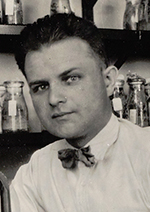
Once the foundations of transmission genetics had been worked out, researchers began to consider what the chemical nature of the gene might be. Here Milislav Demerec offers one of the first such efforts. He concludes that the gene is a minute organic particle, capable of reproduction, located in a chromosome and responsible for the transmission of a hereditary characteristic. Moreover, he states that the available evidence suggests that genes are uni-molecular, and he notes:
If a gene is a complex organic molecule it would be expected to be similar in composition to other complex molecules, viz. molecular groups constituting this molecule (whatever these groups may be) would he arranged in chains and side chains. He then offers a drawing of the structure of DNA (!) as an example of a complex organic molecule, but is quick to add that The diagram is not intended to give any implication as to the number, the type, or the arrangement of the molecules in a gene group. Its purpose is to illustrate the molecular structure of a complex organic molecule.
Another 20 years would have to pass before the true chemical nature of the gene would be established.
48. PAPER: Morgan, Thomas H. (1909): Recent Experiments on the Inheritance of Coat Colors in Mice
49. PAPER: Yule, G. Udny (1902): Mendel's laws and their probably relations to intra-racial heredity.

Sewall Green Wright was an American geneticist known for his influential work on evolutionary theory and also for his work on path analysis. Sewall Wright was born in Melrose, Massachusetts to Philip Green Wright and Elizabeth Quincy Sewall Wright. His parents were first cousins, an interesting fact in light of Wright's later research on inbreeding. The family moved three years later after Philip accepted a teaching job at Lombard College, a Universalist college in Galesburg, Illinois. As a child, Wright helped his father and brother print and publish an early book of poems by his father's student Carl Sandburg. Sewall was the oldest of three gifted brothers — the others being the aeronautical engineer Theodore Paul Wright and the political scientist Quincy Wright. From an early age Wright had a love and talent for mathematics and biology.
Wright received his Ph.D. from Harvard University, where he worked at the Bussey Institute with the pioneering mammalian geneticist William Ernest Castle investigating the inheritance of coat colors in mammals. He worked for the U.S. Department of Agriculture until 1925, when he joined the Department of Zoology at the University of Chicago. He remained there until his retirement in 1955, when he moved to the University of Wisconsin–Madison.
Wright was a founder of population genetics alongside Ronald Fisher and J.B.S. Haldane, which was a major step in the development of the modern synthesis combining genetics with evolution. He discovered the inbreeding coefficient and methods of computing it in pedigree animals. He extended this work to populations, computing the amount of inbreeding between members of populations as a result of random genetic drift, and along with Fisher he pioneered methods for computing the distribution of gene frequencies among populations as a result of the interaction of natural selection, mutation, migration and genetic drift. Wright also made major contributions to mammalian and biochemical genetics.
In 1921, Wright published a series of five papers (of which this is the first) on Systems of Mating. In these papers Wright used his method of path coefficients to consider the effect of mating systems on patterns of inheritance.
Path coefficients are standardized versions of linear regression weights which can be used in examining the possible causal linkage between statistical variables in the structural equation modeling approach. The standardization involves multiplying the ordinary regression coefficient by the standard deviations of the corresponding explanatory variable: these can then be compared to assess the relative effects of the variables within the fitted regression model. The idea of standardization can be extended to apply to partial regression coefficients. The term "path coefficient" derives from Wright's 1921 paper, "Correlation and causation", Journal of Agricultural Research, 20, 557–585, where a particular diagram-based approach was used to consider the relations between variables in a multivariate system.
55. PAPER: Weinstein, Alexander (1936): The Theory of Multiple-strand Crossing Over
57. PAPER: Castle, W. E., and Wachter, W. L. (1924): Variations of Linkage in Rats and Mice
58. PAPER: Dunn, L. C. (1920): Linkage in Mice and Rats
59. PAPER: Castle, W. E. (1913): Simplification of Mendelian formulae.
Soon after Mendel was rediscovered, the nature of the gene was being worked out. Along the way, many suggested changes to the symbology being used (e.g., B for dominant allele, b for recessive). Here Castle offers some suggestions for changing Mendelian symbols.
60. PAPER: McClung, C. E. (1901): Notes on the accessory chromosome.
(with an explanatory introduction by R. J. Robbins)

In this brief paper, McClung introduces the evidence that male and female insects exhibit different chromosomal structures in their nuclei and that spermatozoa fall into two types &,mdash; those that carry the "accessory chromosome" and those that do not.
Based on this analysis, McClung suggests that the presence or absence of the "accessory chromosome" in spermatozoa may determine the sex of the progeny. McClung published this short note in 1901 to alert the scientific community of his findings and to alert them to a more detailed argument that he had already submitted for publication elsewhere and that he knew would appear a year later, in McClung, C. E. 1902. The accessory chromosome - Sex determinant? Biological Bulletin, 3:43-84.
61. PAPER: Wright, Sewall (1931): Evolution in Mendelian populations.
62. PAPER: Stevens, Nettie M. (1906): Studies on the germ cells of aphids.

Nettie Stevens was one of the first female scientists to make a name for herself in the biological sciences. In 1896, Stevens went to California to attend Leland Stanford Jr. University, where she obtained first a bachelor's and then a masters in biology. Her masters thesis involved microscopic work and precise, careful detailing of new species of marine life. This training was a factor in her success with later investigations of chromosomal behavior. After Stanford, Stevens pursued a PhD. at Bryn Mawr College, where Thomas Hunt Morgan was still teaching and was one of her professors. Stevens again did so well that she was awarded a fellowship to study abroad. She traveled to Europe and spent time in Theodor Boveri's lab at the Zoological Institute at Würzburg, Germany. Boveri was working on the problem of the role of chromosomes in heredity and Stevens likely developed an interest in the subject from her stay.
In 1903, after receiving her Ph.D from Bryn Mawr, Stevens was given an assistantship by the Carnegie Institute after glowing recommendations from Thomas Hunt Morgan, Edmund Wilson and M. Carey Thomas, the president of Bryn Mawr. Her work on sex determination was published as a Carnegie Institute report in 1905. In this first study she looked at sex determination in meal worms. Later, she studied sex determination in many different species of insects. Stevens' assistantship at Bryn Mawr still meant that she had to teach. desiring a pure research position, Stevens wrote to Charles Davenport at Cold Spring Harbor to see if it was possible for her to work at his Station for Experimental Biology. Unfortunately, Stevens died of breast cancer in 1912 before she could occupy the research professorship created for her at Bryn Mawr, or work with Davenport at Cold Spring Harbor.
63. PAPER: Morgan, Thomas H. (1912): Complete linkage in the second chromosome of the male of Drosophila
65. PAPER: Davenport, C. B. (1930): Sex linkage in man
66. PAPER: Cook, Robert. (1937): A chronology of genetics.
Robert Cook, as editor of The Journal of Heredity, was especially well positioned to appreciate how the new science of genetics developed after the rediscovery of Mendel in 1900 and the establishment of the chromosome theory of inheritance by T. H. Morgan and his students.
In this essay, Cook traces the history of genetics to four main roots - mathematics, plant breeding, animal breeding, and cytology.
67. PAPER: Bateson, William. (1900): Problems of heredity as a subject for horticultural investigation.

Mendel's work of 1865 was largely neglected, until 1900 when it was simultaneously rediscovered by Hugo de Vries, Carl Correns, and Erik von Tschermak. When Mendel's work came to the attention of William Bateson (who himself had already been advocating controlled crosses as an approach to studying heredity), he was convinced that Mendel's work was of major importance:
That we are in the presence of a new principle of the highest importance is, I think, manifest. To what further conclusions it may lead us cannot yet be foretold.
Bateson devoted the remainder of his scientific career to further elucidations of "Mendelism." This present paper captures the enthusiasm of Bateson's first encounter with the works of Mendel.
69. PAPER: Sturtevant, A. H. (1917): Crossing Over without Chiasmatype?
75. PAPER: Davenport, Gertrude C, and Davenport, Charles B. (1909): Heredity of Hair Color in Man
76. PAPER: Cox, Charles F. (1909): Charles Darwin and the Mutation Theory
77. PAPER: Wright, Sewall (1921): Systems of mating. V. General considerations.

Sewall Green Wright was an American geneticist known for his influential work on evolutionary theory and also for his work on path analysis. Sewall Wright was born in Melrose, Massachusetts to Philip Green Wright and Elizabeth Quincy Sewall Wright. His parents were first cousins, an interesting fact in light of Wright's later research on inbreeding. The family moved three years later after Philip accepted a teaching job at Lombard College, a Universalist college in Galesburg, Illinois. As a child, Wright helped his father and brother print and publish an early book of poems by his father's student Carl Sandburg. Sewall was the oldest of three gifted brothers — the others being the aeronautical engineer Theodore Paul Wright and the political scientist Quincy Wright. From an early age Wright had a love and talent for mathematics and biology.
Wright received his Ph.D. from Harvard University, where he worked at the Bussey Institute with the pioneering mammalian geneticist William Ernest Castle investigating the inheritance of coat colors in mammals. He worked for the U.S. Department of Agriculture until 1925, when he joined the Department of Zoology at the University of Chicago. He remained there until his retirement in 1955, when he moved to the University of Wisconsin–Madison.
Wright was a founder of population genetics alongside Ronald Fisher and J.B.S. Haldane, which was a major step in the development of the modern synthesis combining genetics with evolution. He discovered the inbreeding coefficient and methods of computing it in pedigree animals. He extended this work to populations, computing the amount of inbreeding between members of populations as a result of random genetic drift, and along with Fisher he pioneered methods for computing the distribution of gene frequencies among populations as a result of the interaction of natural selection, mutation, migration and genetic drift. Wright also made major contributions to mammalian and biochemical genetics.
In 1921, Wright published a series of five papers (of which this is the fifth) on Systems of Mating. In these papers Wright used his method of path coefficients to consider the effect of mating systems on patterns of inheritance.
Path coefficients are standardized versions of linear regression weights which can be used in examining the possible causal linkage between statistical variables in the structural equation modeling approach. The standardization involves multiplying the ordinary regression coefficient by the standard deviations of the corresponding explanatory variable: these can then be compared to assess the relative effects of the variables within the fitted regression model. The idea of standardization can be extended to apply to partial regression coefficients. The term "path coefficient" derives from Wright's 1921 paper, "Correlation and causation", Journal of Agricultural Research, 20, 557–585, where a particular diagram-based approach was used to consider the relations between variables in a multivariate system.
78. PAPER: Vries, Hugo de (1925): Mutant races derived from Oenothera lamarckiana semigigas.
79. PAPER: Morgan, Thomas H. (1913): Factors and Unit Characters in Mendelian Heredity.
80. PAPER: Morgan, Thomas H. (1911): The origin of nine wing mutations in Drosophila.
81. PAPER: Castle, W. E. and Reed, S. C. (1936): Studies of Inheritance in Lop-eared Rabbits
83. PAPER: Belling, John (1933): Crossing Over and Gene Rearrangement in Flowering Plants
84. PAPER: Patterson, J. T. (1933): The Mechanism of Mosaic Formation in Drosophila
86. PAPER: Payne, F. (1924): Crossover Modifiers in the Third Chromosome of Drosophila melanogaster
87. PAPER: Davis, W. M. (1926): The Value of Outrageous Geological Hypotheses.

Sewall Green Wright was an American geneticist known for his influential work on evolutionary theory and also for his work on path analysis. Sewall Wright was born in Melrose, Massachusetts to Philip Green Wright and Elizabeth Quincy Sewall Wright. His parents were first cousins, an interesting fact in light of Wright's later research on inbreeding. The family moved three years later after Philip accepted a teaching job at Lombard College, a Universalist college in Galesburg, Illinois. As a child, Wright helped his father and brother print and publish an early book of poems by his father's student Carl Sandburg. Sewall was the oldest of three gifted brothers — the others being the aeronautical engineer Theodore Paul Wright and the political scientist Quincy Wright. From an early age Wright had a love and talent for mathematics and biology.
Wright received his Ph.D. from Harvard University, where he worked at the Bussey Institute with the pioneering mammalian geneticist William Ernest Castle investigating the inheritance of coat colors in mammals. He worked for the U.S. Department of Agriculture until 1925, when he joined the Department of Zoology at the University of Chicago. He remained there until his retirement in 1955, when he moved to the University of Wisconsin–Madison.
Wright was a founder of population genetics alongside Ronald Fisher and J.B.S. Haldane, which was a major step in the development of the modern synthesis combining genetics with evolution. He discovered the inbreeding coefficient and methods of computing it in pedigree animals. He extended this work to populations, computing the amount of inbreeding between members of populations as a result of random genetic drift, and along with Fisher he pioneered methods for computing the distribution of gene frequencies among populations as a result of the interaction of natural selection, mutation, migration and genetic drift. Wright also made major contributions to mammalian and biochemical genetics.
In 1921, Wright published a series of five papers (of which this is the second) on Systems of Mating. In these papers Wright used his method of path coefficients to consider the effect of mating systems on patterns of inheritance.
Path coefficients are standardized versions of linear regression weights which can be used in examining the possible causal linkage between statistical variables in the structural equation modeling approach. The standardization involves multiplying the ordinary regression coefficient by the standard deviations of the corresponding explanatory variable: these can then be compared to assess the relative effects of the variables within the fitted regression model. The idea of standardization can be extended to apply to partial regression coefficients. The term "path coefficient" derives from Wright's 1921 paper, "Correlation and causation", Journal of Agricultural Research, 20, 557–585, where a particular diagram-based approach was used to consider the relations between variables in a multivariate system.
90. PAPER: Wright, Sewall (1918): On the nature of size factors.

Although Creighton and McClintock's 1931 paper — A correlation of cytological and genetical crossing-over in Zea mays. — had provided data in support of the notion that cytological crossing-over occurs and that it is accompanied by genetical crossing-over, some had criticized the relatively few data points in the paper. In this 1935 paper, the authors acknowledge the criticism, then explain why they will, in this paper, be sharing some additional corroborative data with little additional commentary:
There has recently been some skepticism expressed (Brink and Cooper, 1935) as to the value of the studies on the correlation of cytological and genetical crossing-over in maize published by Creighton and McClintock (1931) because of the fewness of the data. Since the paper by Stern (1931) dealing with Drosophila and having much more extensive data appeared at practically the same time and yielded the same conclusions, the authors felt it unnecessary to add to the ever-increasing amount of published work merely to record more evidence of the same nature without supplying anything essentially new or advancing. Therefore, confirmatory data which have accumulated since the time the joint paper mentioned above was published have not been considered for a separate publication. However, we now feel forced to add more data merely to counteract any suspicion that the evidence previously presented constituted insufficient proof. This will be done in as brief a form as possible, since a discussion of the method has been given in the paper mentioned above.
For additional commentary on Creighton and McClintock's important work, see Edward Coe and Lee B. Kass (2005) Proof of physical exchange of genes on the chromosomes. Proceedings of the National Academy of Sciences, USA. 102:6641-6646.
98. BOOK: Drinkwater, H. (1910): A Lecture on Mendelism.
This short book was based on a lecture given by Drinkwater as one of a series known as "Science Lectures for the People." The book provides insights into the general perception (as opposed to scholarly view) of genetics very early after the field had begun.
The book also contains some nice portraits of Mendel, Bateson, and Punnett.
99. PAPER: Johannsen, W (1911): The Genotype Conception of Heredity.
This paper is based on a talk given to The American Society of Naturalists in December, 1910. In this presentation, Johanssen discusses the challenges associated with using current language to describe new phenomena and suggests several new terms as possibly being of use:
It is a well-established fact that language is not only our servant, when we wish to express-or even to conceal our thoughts, but that it may also be our master, overpowering us by means of the notions attached to the current words. This fact is the reason why it is desirable to create a new terminology in all cases where new or revised conceptions are being developed. Old terms are mostly compromised by their application in antiquated or erroneous theories and systems, from which they carry splinters of inadequate ideas not always harmless to the developing insight. Therefore I have proposed the terms "gene" and "genotype" and some further terms, as "phenotype" and "biotype," to be used in the science of genetics. The "gene" is nothing but a very applicable little word, easily combined with others, and hence it may be useful as an expression for the "unit-factors," "elements" or "allelomorphs" in the gametes, demonstrated by modern Mendelian researches. A "genotype" is the sum total of all the "genes" in a gamete or in a zygote. When a monohybrid is formed by cross fertilization, the "genotype" of this F1-organism is heterozygotic in one single point and the "genotypes" of the two "genodifferent" gametes in question differ in one single point from each other. As to the nature of the "genes" it is as yet of no value to propose any hypothesis; but that the notion "gene" covers a reality is evident from Mendelism.
100. PAPER: East, Edward M. (1909): The Distinction between Development and Heredity in Inbreeding.